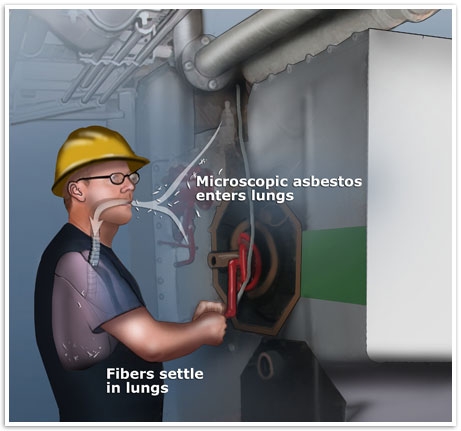Home Renovations and Exposure to Dangerous Chemicals
The construction lawyers at the Cobb Law Group welcome guest blogger and health advocate, Brian Turner to our Georgia Construction, Bond & Lien Law Blog. He warns about the health and safety concerns that one should keep in mind while doing home renovations or DIY projects as exposure to certain materials can cause harm to yourself and family members.
Home renovations may put homeowners at risk of exposure to dangerous chemicals and toxic substances. Homeowners are at risk of respiratory illnesses related to exposure to substances like asbestos or the fumes from paints or cleaning agents. Other risks are tied to the building materials selected for the renovation projects. For the do-it-yourself crowd, little may be known about working with certain types of building materials in home renovation projects. One popular building material is vinyl siding and it comes with its share of risks that people should be aware of when working with popular material.
Vinyl materials in construction
Vinyl siding is commonly marketed as a green product that is fire retardant. Its wide use in the construction industry is tied to how affordable the composite materials. Vinyl siding contains poly vinyl chloride and is one of the most common synthetic materials available. It is used externally for wall cladding and internally for interior finishes. In recent years, vinyl is used internally in the temporary housing units for Katrina victims put occupants at risks. Those temporarily relocated to the trailers ended up being stuck in the units for a longer time than originally planned and became sick when the units became too hot. The vinyl components of trailer units were the flooring and cabinets. When the heat became intense, formaldehyde was released into the air and inhaled by the Katrina evacuees. In home renovation, PVC vinyl siding products may not be suitable for locations where the heat can become a problem.
Mold and Vinyl
As an alternative to other commonly used building products, vinyl is chosen because of its durability. It is less likely to rot than other types of building materials. One downside to vinyl is that it can attract mold. The small crevices on the surface of the material make it vulnerable to mold. During the spring and fall, the risks for developing a mold problem is greater. During the spring, there is more moisture and in the fall there is less sunlight. Mold problems can cause respiratory problems if not eliminated and removed regularly. Vinegar is a great cleaning agent for mold removal. Tougher mold conditions may warrant the use of bleach products. When mold is detected, it should be removed immediately.
Vinyl and flooring
When the home renovation project is being considered, the condition of the flooring should be evaluated. Older homes may have vinyl flooring. As long as the floors are in good condition, the vinyl flooring may pose limited risks to the occupants of the home in most cases. If not being replaced, the flooring tiles should be cleaned by buffing with a machine with a 300 RPM to avoid damaging the tiles. Some of the older homes may contain vinyl flooring products that contain asbestos. The vinyl flooring products may contain asbestos materials. Individuals who are considering removing their vinyl flooring due to asbestos should be cautious to avoid violating the Clean Air Act, which requires that experts be used to handle the removal process.
Vinyl products used in home renovation projects should be carefully considered before being incorporated into the building project. In homes with vinyl building materials, proper cleaning techniques should be employed to minimize safety risks.

